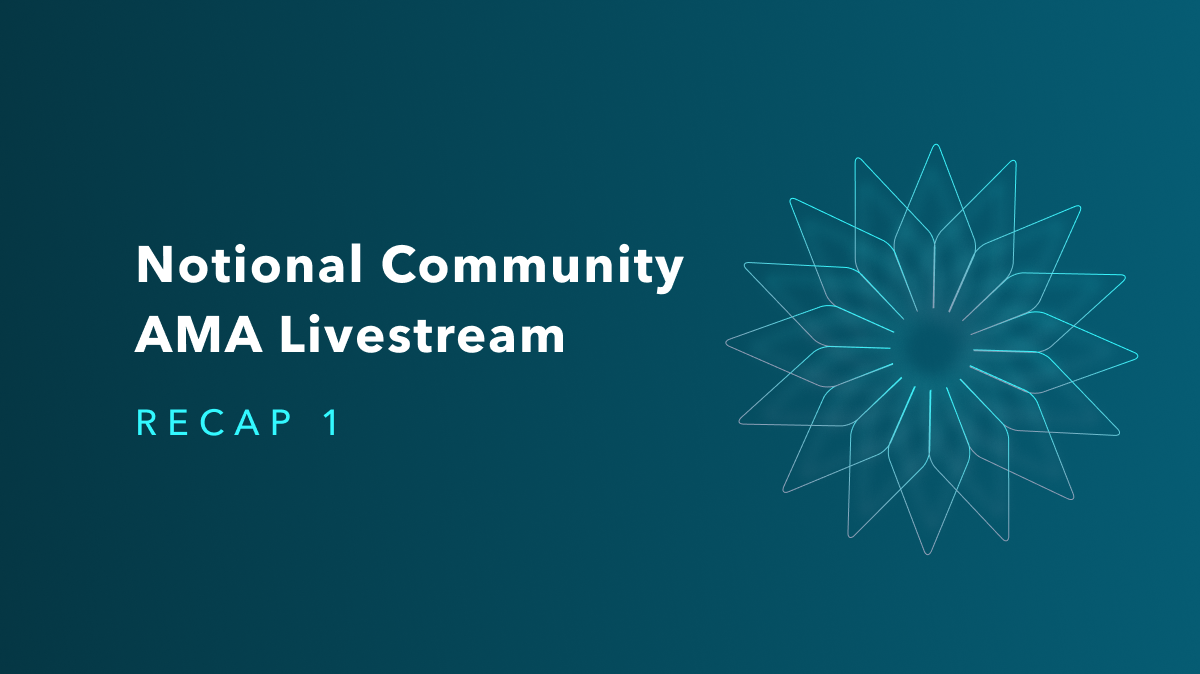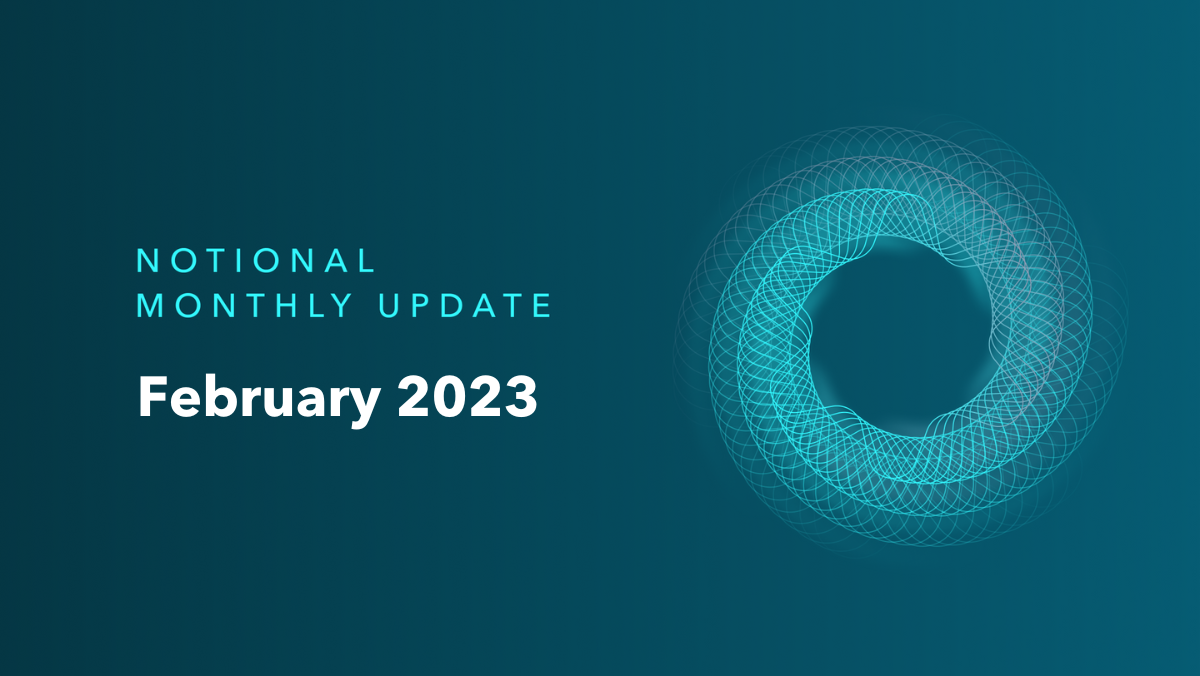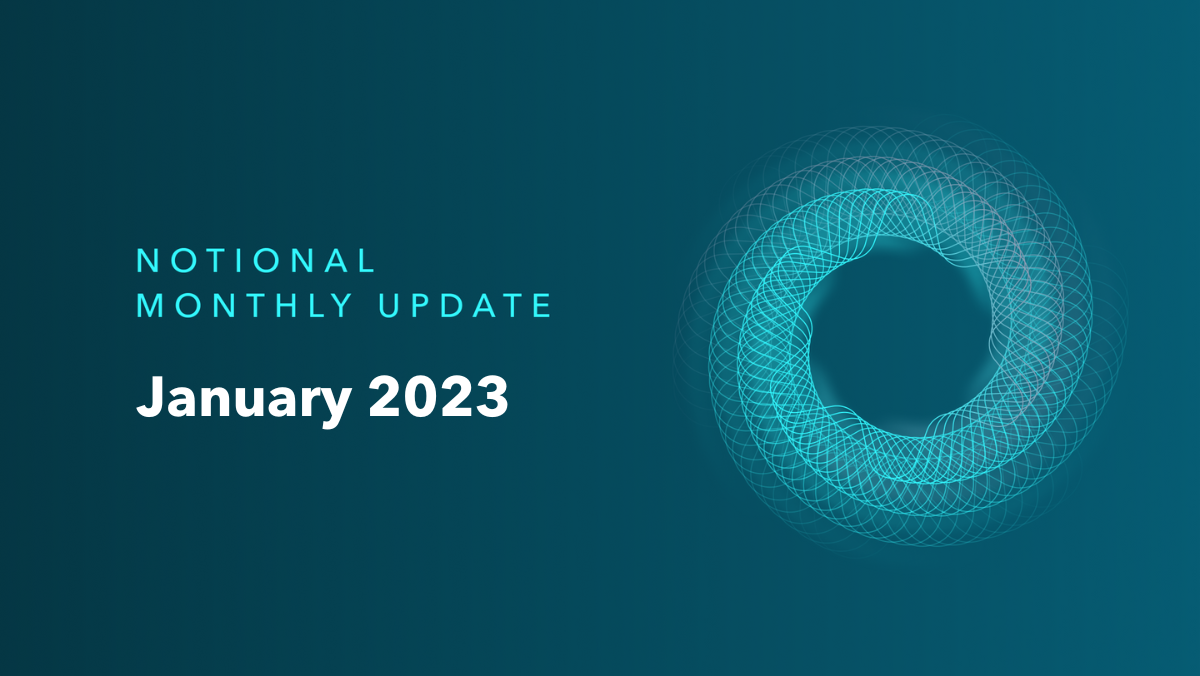
Notional Community AMA Livestream #1 Recap
Hello Notional Community - our first internal AMA was held on July 30 as a livestream on our Twitter account. We were pleased to collect questions from our Discord and the videos already have 600+ views. For anyone who couldn’t make it, we’ve recapped the main points below, and also made quick videos on many of the subjects - subscribe to our channel for more! The full video is at the bottom of this post.
Our next AMA is being held in conjunction with Code Arena on their Discord server - Friday, August 20 @1pm ET - Join us!

Team bios
-Teddy Woodward (CEO) has the finance background and experience as an interest rate swap trader at Barclays in London for 4+ years. He then went on to trading crypto at a family firm in Chicago.
-Jeff Wu (CTO) has the background in tech - he moved to SF in 2011 as an early employee of Atlassian. After leaving in 2017, he started learning about crypto/ethereum - was inspired by MakerDao to dive deeper into DeFi and was later a Blockchain manager at Splunk.
-Jeff & Teddy met at SF Blockchain Week Hackathon in 2019 - their fixed rate project won first prize and proved there was great interest and potential for fixed rate products in DeFi.
Main differences between V1 & V2
-Longer-dated maturities - at launch, 3m, 6m, 1 year - in the future will be able to open 2, 5, 10 & 20 year maturities.
-nTokens - Introducing an auto-rolling and totally passive way of providing liquidity on Notional - no more selecting individual maturity pools and rolling between maturities at expiration. Higher returns, better experience for LPs - this means more liquidity and better rates for users.
Difference between Notional & other fixed rate protocols
-Most other protocols are taking yield bearing assets like c- or a-tokens and putting them in a vault - then they give some users fixed rates, and the rest variable rates. - Element/Pendle/Barnbridge may be examples. But this only works for lenders - you can’t borrow.
-Key advantage for Notional is that we serve both borrowers and lenders. This is important for lenders because borrowers pay more to lock in a fixed rate and avoid interest rate volatility - this means that lenders get access to the higher interest rates that the borrowers are willing to pay.
-Yield serves both borrowers and lenders, but there are two main differences. 1) Notional’s V2 LP experience is better due to nTokens and Compound Integration. 2) You can borrow against your nTokens on Notional - someone who wants to borrow against their ETH can use it to mint nETH, earn an interest rate on that ETH + NOTE incentives, and then they're able to borrow against that nETH. This optimizes the yield that they can earn on the collateral that users post against their debt.
Security
-Security is top priority above all else. Overarching design means that the system is designed securely but to also maximize capital efficiency. Thousands of lines of unit tests were done before shipping to auditors.
3 audit processes:
ABDK (Uniswap v3 auditor)
Certora formal certification
Code Arena bug bounty (150,000 USDC + 50,000 NOTE)
NOTE launch + liquidity mining
-Protocol’s native governance token is NOTE, with an aim to decentralize and give ownership to the community.
-Distribution of NOTE will be mostly via liquidity mining program - reflects the importance that LPs play in the system.
-Liquidity mining program incentivizes holding nTokens, which represent a share of the liquidity in a given currency’s pool.
Retrospective airdrop
-NOTE will be deployed alongside V2 launch with a staged deployment. NOTE will come online to be able to be claimed via a tool prior to launch in September, but they will be locked for a time prior to full launch.
Getting involved
-Community program - Learn more here - there are grants for technical developers, and also ways for content creators, community builders, translators and moderators to all get involved.
-Code Arena - bounty is paid regardless - only difference is how it is divvied up due to the # and severity of bugs found - even non-experts can take a look at the code and potentially earn big $$.
-Governance parameters - community can engage in the process for financial/analytics settings to tune the system after launch.
Notional L2
-Current focus is mainnet launch, however Notional has been in contact with various L2 solutions - looking for the best solution based on where users are and where the most activity and assets are going to be in the near future.
Insurance
-Currently integrated with Nexus and will likely continue for V2 - however to get a tighter integration (such as one-click cover) it is a bit more complicated as the DeFI insurance market is still very immature. Actively pursuing closer integrations for V2, but many factors are outside Notional's control, such as lack of capacity, etc.
How do institutional investors get onboarded to a system like Notional?
-Everybody is interested in DeFi’s interest rates, but getting them to pull the trigger is a process that is driven by two things: Time (DeFi is too new) & Explanation (getting ppl to feel they have a rough understanding of how the system works).
What’s the process for opening up longer-dated maturities?
-First step is launching 1 year and seeing how the demand stacks up against the six-month. It will be a progressive process in a close conversation with users so we can be confident that longer-dated maturities are truly in demand. Different maturity pools fracture the liquidity so we need to be sure demand is there.
Collateral Types
-Dai USDC USDT (not eligible as collateral) WBTC ETH - however, system is designed to be able to easily onboard more collateral types.
-Alternative collateral types such as NFTs - it's an interesting concept, but users’ funds are top priority, so that is not on the short-term roadmap.
Full Livestream Video:
To stay on top of Notional’s progress towards launch, follow us on Twitter or hop in our Discord.
Thanks,
The Notional Team
Notional Finance Newsletter
Join the newsletter to receive the latest updates in your inbox.









